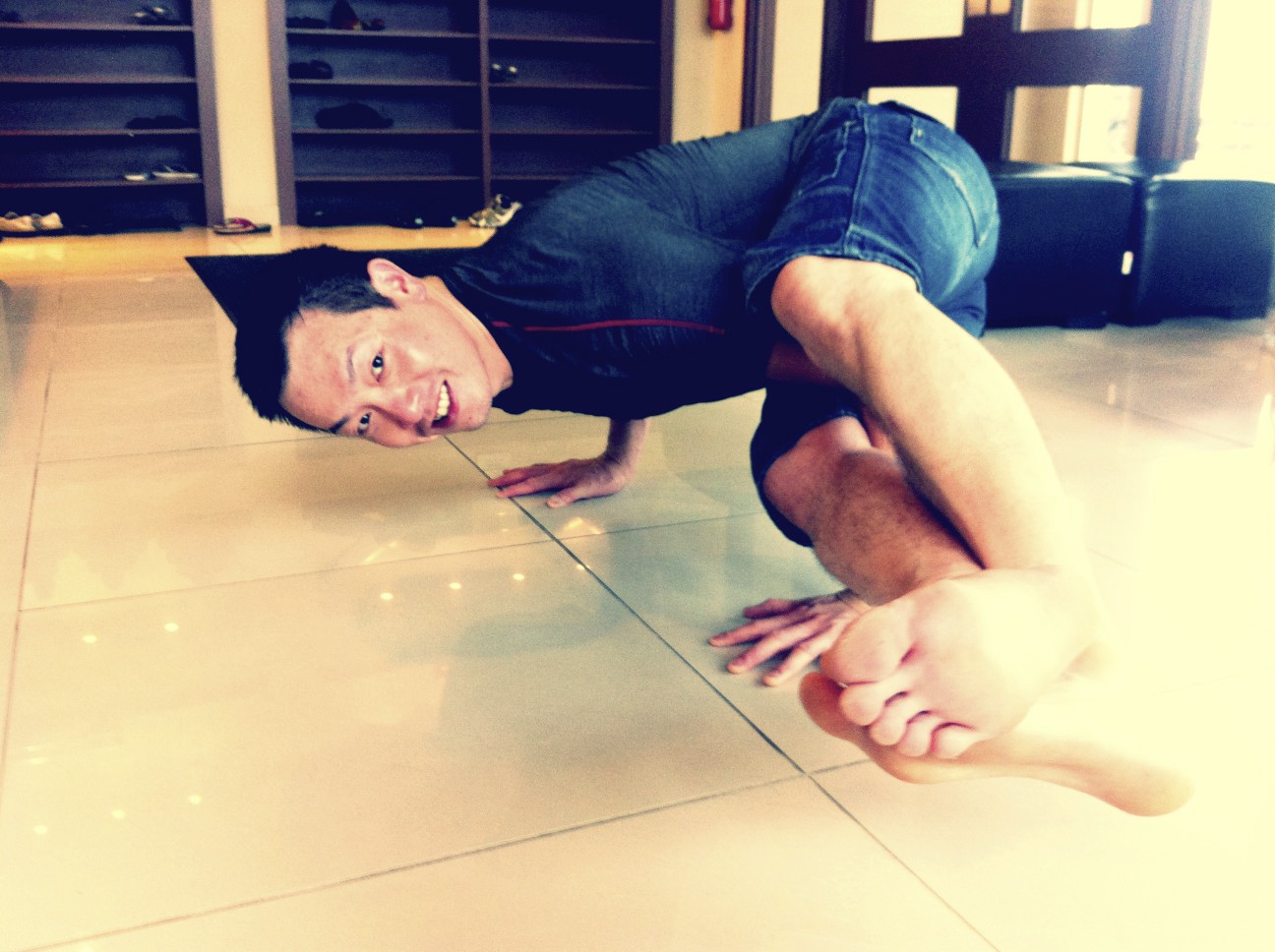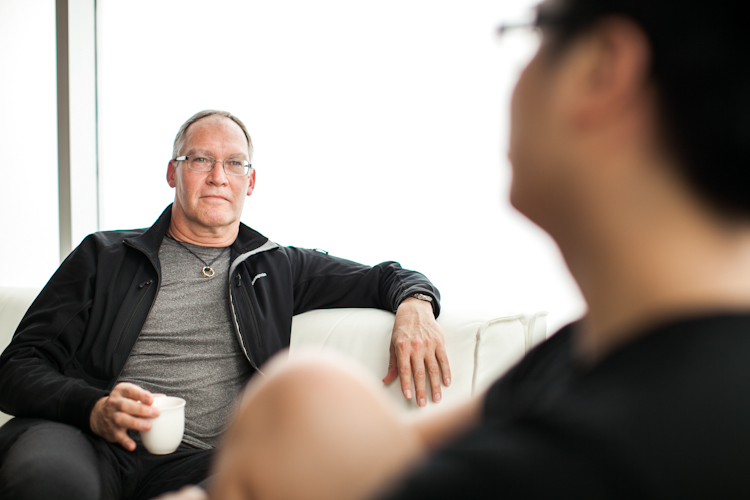What is acupuncture?
Acupuncture comes from a complete system of medicine and healing known as Traditional Chinese Medicine (TCM). TCM has been practiced for over 5,000 years and has been selected by the World Health Organization for worldwide propagation to meet the health care needs of people around the world into the 21st century. Acupuncture is one of 4 bodies which make up Traditional Chinese Medicine (TCM), the others including Moxabustion, Tui Na Chinese Massage and Chinese Herbal Medicinals. Acupuncture is the insertion of very fine, sterile needles into specific points to promote healing and stop pain. In Chinese Medicine, acupuncture helps to active "Qi" or the body's energy to harmonize and optimize the functions of the internal organs and the entire body.
The Chinese art of acupuncture dates back over 2000 years.
Acupuncture was first introduced into Europe in the 17th Century, but up until the recent twentieth century, much of the world knew little about it, its origins and its capacity to promote and maintain good health.
One of the most important concepts of Chinese medicine is that of natural balance - yin and yang. When such a proper balance of forces exists, the body has achieved a healthy circulation of the life force qi (roughly pronounced "chee").
Qi is said to travel the body along channels called "meridians". Qi flows constantly up and down these pathways and when the flow of qi is insufficient, unbalanced, or interrupted, yin and yang become unbalanced and illness may occur.
An understanding of the relationship between the body, yin and yang, and qi is necessary to understand the utility of acupuncture.
Acupuncture involves the insertion of very fine needles into the skin (sometimes in combination with electrical stimulus or with heat produced by burning specific herbs, called Moxibustion) at specific points in order to influence the functioning of the body.
Traditionally, there are 365 acupoints on the body, most of which have a specific energetic function. Because the needles are so fine only a slight discomfort may be felt. Alternatively, the acupuncturist may apply pressure (acupressure) rather than inserting needles.
Acupuncture can be used to boost the body's natural healing energy in order to promote health and long life, or to treat specific physical and psychological illnesses or complaints.
Modern research shows that acupuncture can affect most of the body's systems - the nervous system, muscle tone, hormone outputs, circulation, antibody production and allergic responses, as well as the respiratory, digestive, urinary and reproductive systems.
Acupuncture also stimulates the nerves in skin and muscle and increases the body's release of natural painkiller - endorphin and serotonin.
Acupuncture can help to treat such conditions as: Pain - including migraines, period pains, backache, trapped nerves, frozen shoulder and other kinds of arthritic and rheumatic pain. It can also be useful in relieving post-operative and post injury pain, such as following sports injuries. Allergic reactions - such as asthma, hayfever and eczema Depression - including stress and anxiety Sinus problems - and chronic catarrh Skin problems - such as mouth ulcers, dermatitis, pruitus (itching) and excessive sweating Nausea and vomiting Abdominal and bowel problems Giving up smoking Eating disorders and drug addiction Insomnia High blood pressure Withdrawal from alcohol Menstrual problems Menopause
Teacher Training
We wanted to share with you the outcome of our very first teacher training held at our South studio. Please enjoy!!
Sugar was taking over my life, so I decided to cleanse..
 I love sugar. Especially during the fall. I would have a pumpkin spice latte every single day if my body wouldn't hate me for it.
I love sugar. Especially during the fall. I would have a pumpkin spice latte every single day if my body wouldn't hate me for it.
That said, I decided it was time to change with the seasons and take on a cleanse. It's time to get serious with our work toward clearer bodies and minds.
I had success with the Wild Rose cleanse in the spring, and figured I would give it another whirl. It's really simple. I take 6 herb pills and 2 squeezes of a tincture with breakfast and dinner for 12 days. It's a food friendly cleanse, but there are very specific things that you're told to avoid. Any tropical fruits, sugar, flour of any grains, or basically anything that's been processed.
Today is day 3. Started relatively easy. I made a delicious breakfast of eggs with fresh basil, morroccan mint, and rosemary, with a blueberry kale smoothie on the side. I continued my day by running around doing errands for hours. Which is normally fine, but when you don't prepare your foods before your adventure, the world isn't typically a cleanse friendly place. I could feel myself getting tired and losing energy; especially next to my very high energy partner.
Of course, we (society in general) make sure we get everything done before we allow ourselves a chance to sit down and properly nourish our bodies. After snacking on 3 cucumbers, I continued to run errands. When I finally came home, I was ravenous.
I created a raw vegan salad using kelp noodles, avocado and chopped bell peppers. Soooo tasty. I felt somewhat satisfied with my meal, but there was just one thing missing: sugar. I decided to be a little bit sneaky and whip up a pumpkin pie milkshake. If I can't have the latte, I'm going to find a way to treat myself to something pumpkin flavored. It turned out wonderfully, and included agave nectar (not necessarily something I should be putting in my body). Now I'm just curious how it would be if I were to warm it up...
I've heard that during cleanses, you'll crave what your body is ridding itself of most, and if that's the case, I must be composed of sugar. I'm finding the first few days to be really tricky, but that seems to be the case with anything. Once we give ourselves permission to make a few mistakes along the way, we find a little well of strength inside that encourages us to finish whatever it is we've started, and face those first few bumps that may initially deter us. I've decided to use these little sugar cravings as a way of reminding myself of my dedication to creating higher potential for my body, and the neverending search for deeper clarity. Even if I may have given in to tasting a new beer at dinner last night.....
Without further ado, the pumpkin pie milkshake....
**vegan, gluten free, nut free
1/2 can of puree pumpkin (I used the Farmer's market brand at Planet Organic)
2 cups coconut milk
1 tbsp nutmeg
2 tbsp ground chia seeds
1 tsp fresh ground ginger
1 tbsp cinnamon
1 tsp cloves
2 tbsp raw agave nectar
Add all ingredients to blender, whip it up & enjoy!!
With love,
Brittany
Wake up your body in bed
It's already Monday! The weekend flew by and now your alarm is going off and it's time to get up and get to work. Don't stress. Before rushing to get dressed, brushing your teeth, and finding your way out the door. Set your alarm about 15 minutes earlier than you normally would and take that extra 15 minutes to do a few yoga poses while you're still laying in bed. Help your body wake up.
1. Lie on your back in Savasana, and come into Supta Badha Konasana (Reclined Butterfly).
Bring your foot soles to touch and allow your knees to fall open to either sides of the bed. You can keep your eyes closed and stretch your fingertips up towards the sky and allow them to gracefully fall behind your head. Take 10 deep breaths here to start waking up the body and the brain.
2. Supine Twist is next. So draw your knees back together, wrap your arms around your shins or thighs and give it a good squeeze. Then allow your knees to fall to the right, your right hand can rest on your knees and left hand reaches to the left. Gaze can go left if that is comfortable for your neck. Take 5 or more deep breaths here and then switch to the other side.
3. Now, it's time to sit up. Paschimottanasana (Forward fold) with both feet in front. Allow this forward fold to be passive and allow your head to be heavy. This helps calm the mind and improves concentration. Then slowly with as much ease as you can, begin to draw yourself back up stacking vertebrae upon vertebrae until you're fully upright. Then open your eyes, roll your head from side to side, and place your feet on the floor and get ready to start your day!
Let's Fly.
Arm balances are great for building strength and cultivating body awareness and focus. Our Power Upside Down Yogi, Lindsey, is a huge advocate for doing anything that require balancing on your hands. Take a look at Lindsey's awesome Crow Pose. Notice how strong and focused this Yoginis is!
HOW TO get into Crow: 1) Take your feet mat width apart and come into a squat. 2) Plant your palms firmly into the earth right underneath your shoulders. 3) Bend your elbows and find Chaturanga Arms. 4) Place your knees high up into your triceps and hug your knees into the midline. 5) Start to shift your balance forward into your hands as you take one foot off the floor and then the other. 6) Squeeze your feet together to find strength in your legs and stability in balance. 7) Allow your gaze to be in front of you to maintain stability.
Tips: 1) Your core strength is the most important! Building the strength in your core will help you go a long way when it comes to arm balances. 2) Chaturanga arms are crucial to Crow pose as well as many other Arm Balances. 3) Keep your knees hugging tightly into your body rather than allowing them to rest on your arms. This helps balance the weight between your legs and your arms 4) Keep squeezing your feet together to engage the muscles in your legs. This will help strengthen your core.
Tell us what your favourite arm balance is!
Don Wong: My Yoga Journey
 I've been physically active all my life. I had a laundry list of activities to keep myself busy such as running, sprinting, weight training, roller blading, cycling, and skiing to name a few. Stretching was not even apart of my vocabulary let alone yoga.
I've been physically active all my life. I had a laundry list of activities to keep myself busy such as running, sprinting, weight training, roller blading, cycling, and skiing to name a few. Stretching was not even apart of my vocabulary let alone yoga.
All that changed when a car, failing to stop at a red light, rear ended me. Sending my vehicle into the car in front of me and in turn sending that vehicle into the car in front of him. After the melee was over, my car was positioned into oncoming traffic. Fortunately the traffic lights were red.
After about 6 months of acupuncture, physiotherapy and chiropractic adjustments, I was not healing. Activities I use to do I was not able to do due to lower back pains, neck pains, and migraines.
I procrastinated about going to yoga for 2 months. Then one day my physiotherapist convinced me to try it out by coming along with me. She literally had to drag me in with a little kicking and screaming.And this is where my yoga journey begins.
After the first class I fell in love. I started attending classes 6 days a week, sometimes 2 to 3 times a day. It’s been little over a year now and I can’t see my life without yoga. Yoga has helped me cope with my lower back and neck pains and has also help alleviate a lot of the migraines. It has helped me become more in tune with my physical body and my mental state of mind causing a shift in my eating habits coupled with a daily practice, it has helped me shed 30 lbs off my frame and I have become more flexible than I could have ever imagined.
Yoga has made a profound change to my life, helping me attain a deeper understanding of myself, enabling me to find inner peace. I am now actively looking into becoming a yoga instructor, to gain a deeper understanding and to maybe one day share what I’ve learned.
Namaste Don Wong
What is Yoga to me?
In a conversation with a friend I once described love as “water”. As we all know, water takes the shape of its container, and in my metaphor, I essentially explained that love takes the shape of the relationship you have with another person; so whether your relationship with another is intimate, or merely a friendship, love is still present, but in a different form. I know you’re asking the question in your head, “well what does this have to do with yoga?”
Relax... I’m getting there.
I’ve only been on this yoga journey, on and off, for 2 years but it has had a significant impact on how I deal with the world around me. Three years ago, I found myself stressing out over my first year of university. In the present day, I still stress out over school; it’s just that now, when I find myself lacking drive or energy, I’ll do a few sun salutations to get me back on track. Essentially, I use yoga to cleanse myself of things that are unnecessarily cluttering my mind. It was during a strong practice recently, that I realized the link between this mental de-cluttering and my (somewhat clever) analogy of love.
Yoga, to me, is a river. Like a river, yoga can be gentle enough to smooth the rough edges of a pebble, but powerful enough to carve an entire landscape; in other words, it can help us get through the little issues (like school stress) that come in everyday life, or it can truly change your entire outlook as a person.
Just like a river, in a yoga class we’re constantly active; whether it is the actual physical movement of a flow, or the constant stream of thoughts moving through our minds while we’re trying to keep our tree pose still, we’re always dynamic. While some try to suppress this mental movement, I’ve realized now that the only way to get through a class smoothly is to embrace these thoughts, acknowledge them, and move on.
Most importantly, yoga and rivers share the same endpoint. While rivers are always running, they will, at some point, end in a larger body of water, like an ocean. Relative to the river, these larger bodies of water are quite still, and although they do move, they move on a larger, more profound scale.
In yoga, while we may not be able to completely detach ourselves from the happenings that occur off the mat, the eventual destination is a place of stillness that is deeper than the shallow, and sometimes rocky movement of our practice; the endpoint is the ocean to our river. The changes that occur when we reach that stillness, like the waves of an ocean, are much more profound and have a greater impact on who we are, compared to the small waves of thought that may occur during our practice. In my mind, this is why instructors always say that savasana is the hardest, but most important pose of that entire hour, despite its simplicity. While no two classes are ever the same, having this understanding of where I’m trying to end up adds some consistency to my entire practice. On the larger scale, I will always be seeking stillness.
"Your innermost sense of self, of who you are, is inseparable from stillness. This is the I Am that is deeper than name and form." - Eckhart Tolle
In spite of this long-winded explanation, all this talk of rivers, love and yoga can be illustrated in a simple equation.
Love = Water.
Yoga = Moving Water.
Therefore Yoga = Moving Love.
That’s exactly what yoga is to me. It’s a moving expression of our affection for ourselves, which allows us the opportunity of real transformation. It’s an hour to shape our proverbial container and create a relationship with ourselves, so that we can fully express our love in a way that is uniquely contoured to who we are. It’s a set of postures and breaths that are all trying to move us towards stillness. When we reach that point, even if it’s only for a brief moment, we realize that it is in stillness that real changes happen.
Categories
- Recipe 11
- Wellness 241
- Zen Habits & Inspiration 100
- Injury Prevention & Health 30
- Classes 1
- Yogalife Classes 7
- Prop Specific 1
- Studio Information 17
- Foundation Friday 25
- Physical Health 3
- Yoga Specific 54
- Curated Playlists 2
- Karma Program 5
- Staff Adventures & Journeys 10
- Anatomy & Information 30
- Community Event 15
- YEG Highlight 8
- Instructor Stories 22
- Yogi of the Month 13
- What's Going On 35
- Yogalife Workshops, Retreats & Trainings 37
- Relaxation 1
- Mental Health 2
- Workshops 34
- Registered Classes 4
- Pregnancy & Family 1
- Member Stories 5

















